Ollie Bearman’s ‘shocking’ F1 history lesson with Martin Brundle
Martin Brundle, Ollie Bearman and cars from the first F1 World Championship race. James Elson is trackside for a 75th anniversary showdown

Jakob ebrey
Gosh!” comes the ever-so-polite exclamation from Britain’s newest Formula 1 star. “I was scared I wouldn’t fit, but then again there’s no height limit…”
Ollie Bearman isn’t peering over the high-tech controls of his Haas VF-25, but the oversized steering wheel of ERA R4A – a car involved in the very first Formula 1 World Championship grand prix. And he’s got company: F1 veteran, Le Mans winner and broadcaster Martin Brundle is shaping up alongside to take out an Alfa Romeo 158, whose sister car won the aforementioned race – and first title – in the hands of Giuseppe Farina.
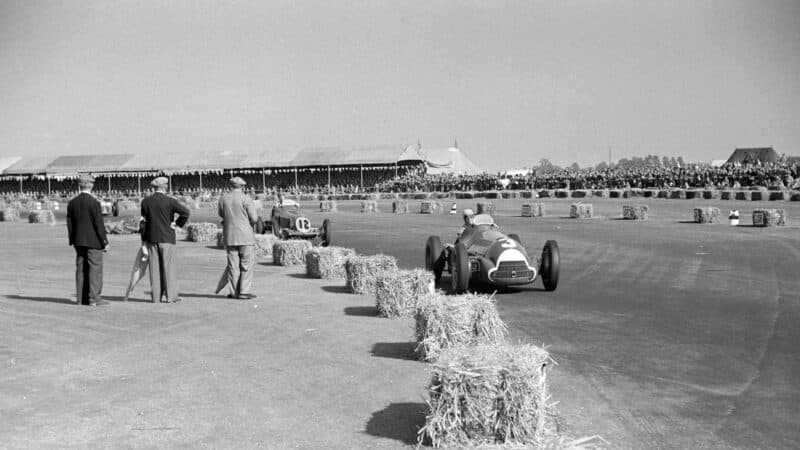
Luigi Fagioli in his Alfa Romeo 158 leads Bob Gerard’s ERA, British Grand Prix, 1950
Jakob ebrey
All are here at Silverstone to film a Sky Sports feature commemorating 75 years since that epoch-defining 1950 British Grand Prix (or Grand Prix d’Europe for sticklers). The Alfa will form part of a gargantuan grid at this year’s Silverstone Festival in August, with a car to represent each F1 world champion in history – the 158 on behalf of ‘Nino’ Farina.
The two machines look magnificent as they’re prepared, gleaming in the National Paddock, but their respective histories couldn’t be any more different.
“R4A was ERA’s first customer car, ordered by racer Pat Fairfield for £1500 in 1935”
R4A was built 90 years ago, and hasn’t stopped racing since. One of the voiturettes built by pre-war racer Raymond Mays’ English Racing Automobiles project (ERA), R4A has history and then some. It was the company’s first customer car, ordered by racer Pat Fairfield for £1500 in 1935. The man known as ‘Skidder’ Fairfield would use it to win that year’s Nuffield Trophy at Donington and the 1937 South African GP, as well as races in France and at Brooklands.
R4A would change hands several times following the death of Fairfield at Le Mans ’37, before being bought by Bob Gerard. It would be his spare car at the 1950 British GP, as Gerard raced his other ERA, R14B, to sixth that day.
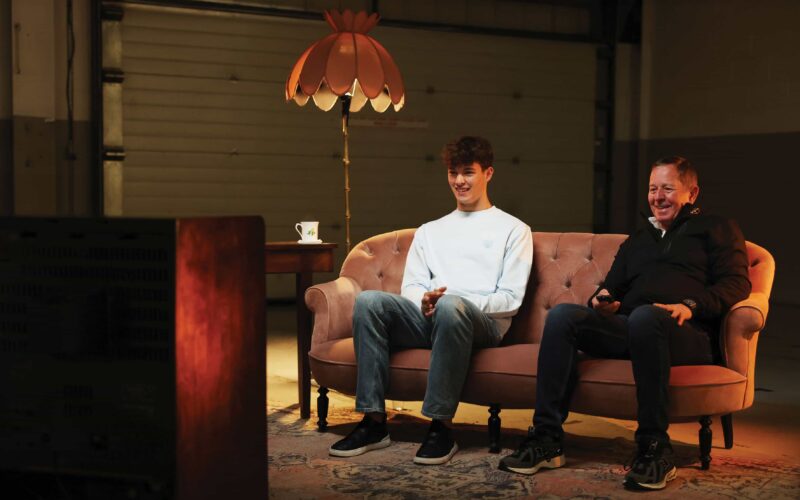
Ollie Bearman and Martin Brundle settle by the TV, 1950s-style.
Jakob ebrey
R4A then moved seamlessly into historic competition. It’s now lovingly looked after – and raced – by Nick Topliss; the car holds the pre-war class record at Shelsley Walsh – 33.03sec, driven by James Baxter in 2014.
The 158 varies in that it was only present at the 1950 British GP in spirit. When thousands of original spare 158 parts were put up for a job-lot sale in the late 2010s, vintage race car builder/restorer Jim Stokes was commissioned to buy them all and construct as authentic a 1950 grand prix car as possible.
What resulted is a brilliant ‘new’ 158 made from 70% original components – and with a supercharged straight eight putting out 300bhp, it sounds as good as it looks. Not that they’ve fired up just yet.
“It’s very different to what I’ve been used to, but the power and acceleration are impressive”
First Bearman and Brundle have a bit of cramming to do. They are filmed watching highlights of the very first Formula 1 World Championship grand prix, doing so in the genteel surroundings of a mocked-up 1950s living room – no matter if it’s actually a re-purposed Silverstone garage in reality.
That momentous day in 1950 saw Farina lead home an Alfa Romeo 1-2-3, with Luigi Fagioli and Reg Parnell following in behind. Gerard chalked a fine sixth behind the three Alfas and two Talbot-Lagos after starting back in 13th.
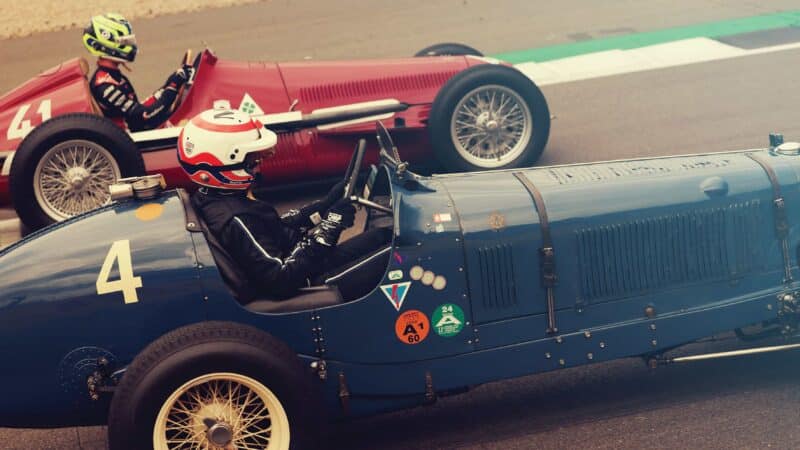
Bearman in the Alfa with Brundle – open-faced helmet – in the ERA; this was Bearman’s first experience of a historic
Jakob ebrey
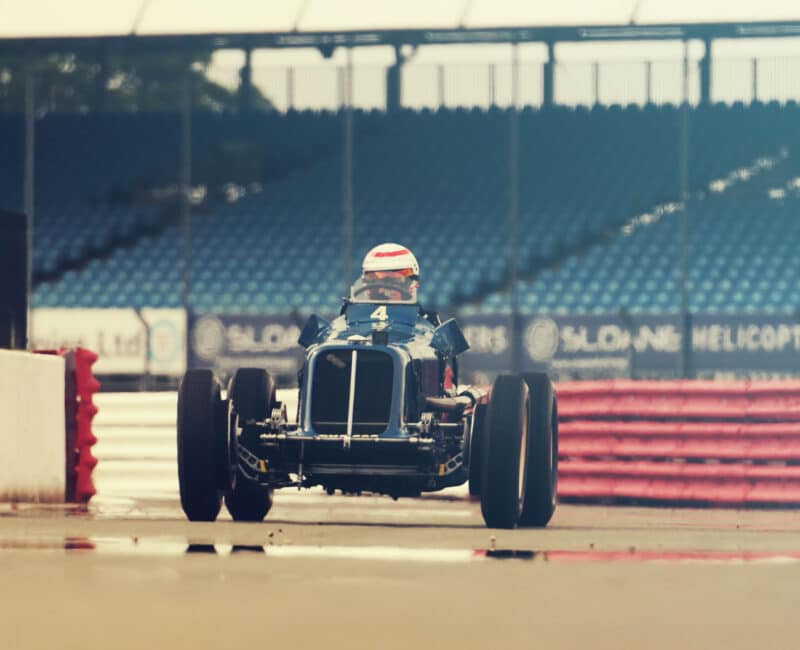
Brundle opens up the Old English Upright.
Jakob ebrey
This was the genesis of the series we know as F1, and the two designs our drivers are taking on today were in the thick of the action. After taking it in, hay bales, oil drums and all, Bearman observes that the current F1 grid “aren’t as fierce as we think”.
As we’ll soon find out though, the Haas man has no fear in driving what Brundle describes on observation as “an oversized Formula Ford car”.
Bearman has to become au fait with the off-set steering column, using the fuel pump at low speed and utilising the pre-selector for gearchanges but, being 20 years old, he takes things in his stride.
Bearman is in his full F1 gear, while Brundle has gone for the historic open-faced helmet look. As the R4A’s supercharged 2-litre rips into life, Bearman is off without hesitation, soon followed by Brundle in the Alfa.
The pair howling down Silverstone’s old pitstraight is a true sight to behold, running side by side and engaging in faux duels as the Sky cameras follow.
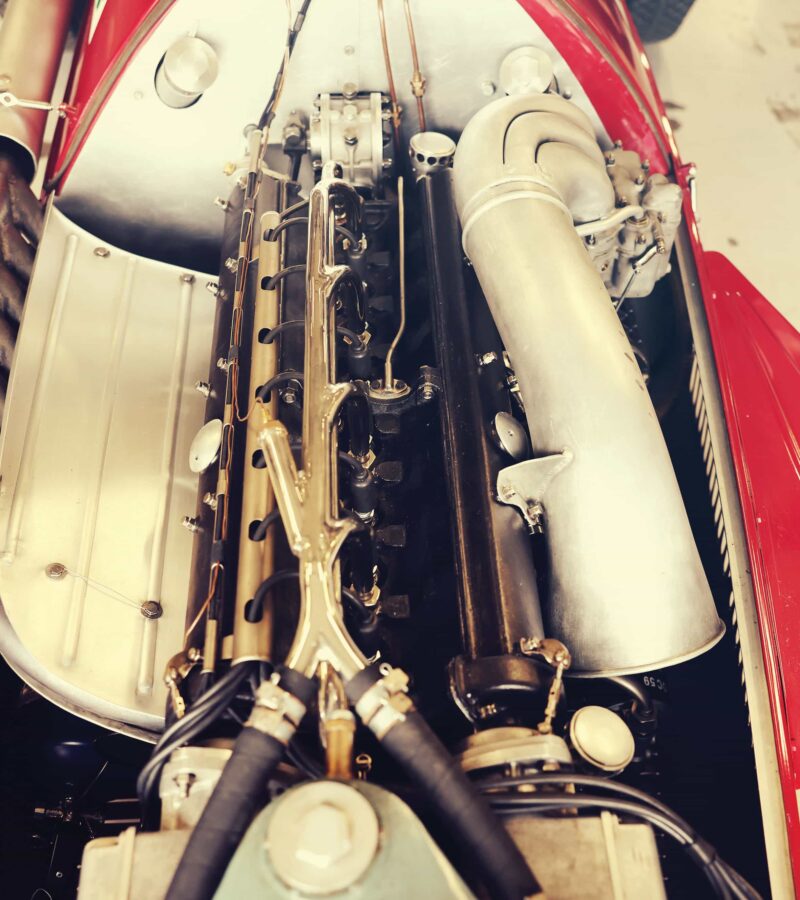
1479cc, eight-cylinder engine made the 158 the world’s best
Jakob ebrey
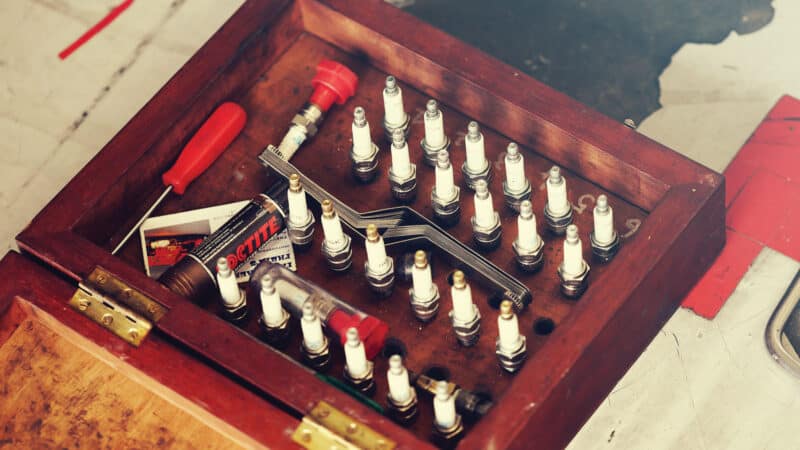
Where do you plug in the computer?
Jakob ebrey
Both indulge in a few power slides, but it’s the current F1 starlet who’s really lost in the moment.
“This thing is amazing – it’s so fast!” shouts Bearman shortly after skidding into the pitlane. “It’s a proper workout.”
He then tears out for another run probably quicker than R4A’s done in 50 years, as its operators look on through gritted smiles. Once Bearman’s caught his breath in between sessions on track, the youngster takes a seat with Motor Sport to re-live the experience.
“You always get out of these cars thinking, ‘How did they do that?’”
“The oldest car I’d driven before today was from 2021 – so it’s one extreme to the other,” he laughs. “It’s very different to what I’ve been used to, but the power and acceleration are really impressive. Actually, I was quite shocked. When you’re in it, there are so many different things to think about. I was having to pump the fuel because we were going slowly, to keep it flowing – no electronics on this car!
“You definitely get more visibility [compared to today’s cars]. I feel like I’m sitting so high in the car. It’s incredible. It was honestly an absolute pleasure today. Really, really fun.”
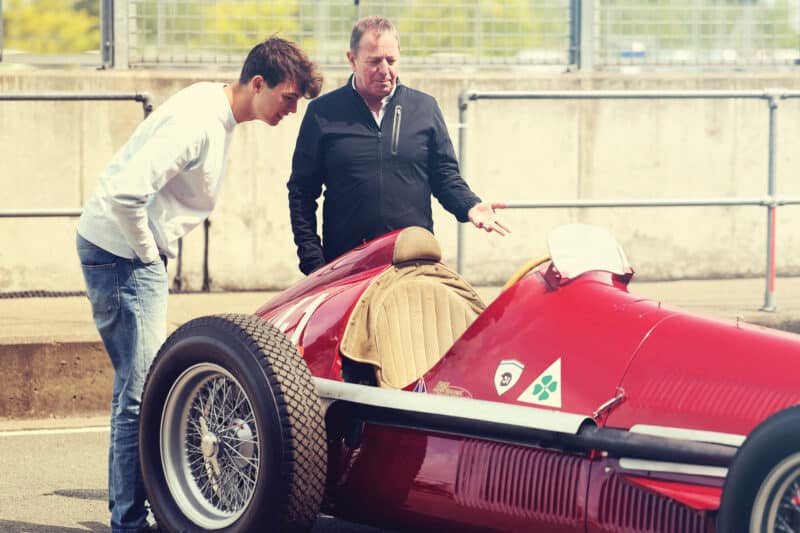
“That’s correct Ollie, no halo…”
Jakob ebrey
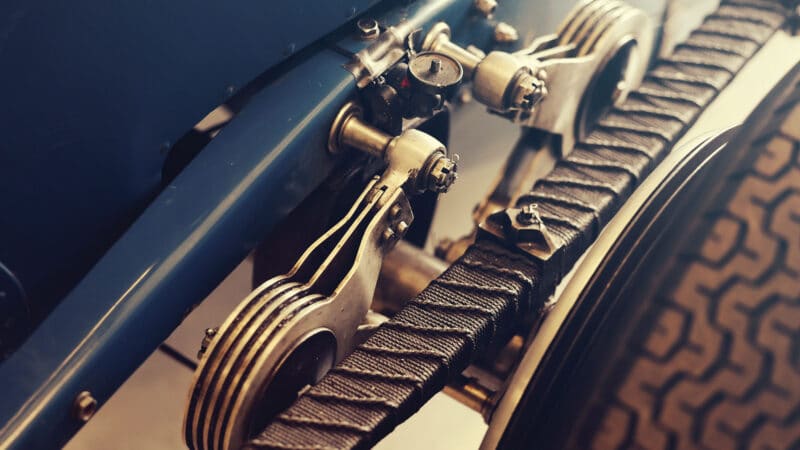
ERA suspension
Jakob ebrey
While R4A is both pliant and exhilarating, the Alfa operates more on a knife edge, as Brundle soon finds out.
“You always get out of them thinking, ‘How did they do that?’” he says of vintage F1 machinery, and particularly the Alfa. “It just seems impossible with how little grip and driveability they had. It’s very tail-happy – also with the fundamentals like shifting gear and blipping the throttle. The gearbox pattern is probably the reverse to where you’d expect it, and the pedals certainly are too.
“You can’t just go breezing into a corner and lean on the mechanical grip – it’s just not there! We were doing 120mph on the straight, they, in period, were doing 180mph-190mph. When you see what drivers of these cars, and people like Stirling [Moss] and Jenks did at Mille Miglia… they were gladiators to say the least.”
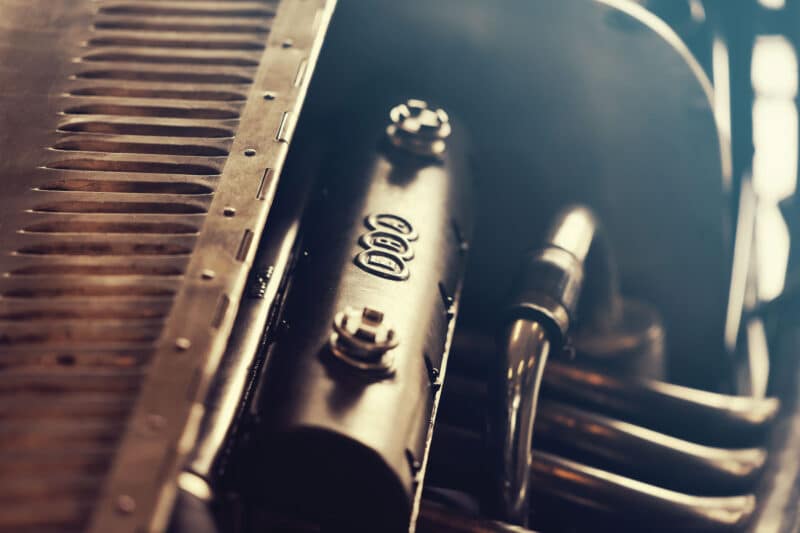
ERA – English Racing Automobiles.
Jakob ebrey
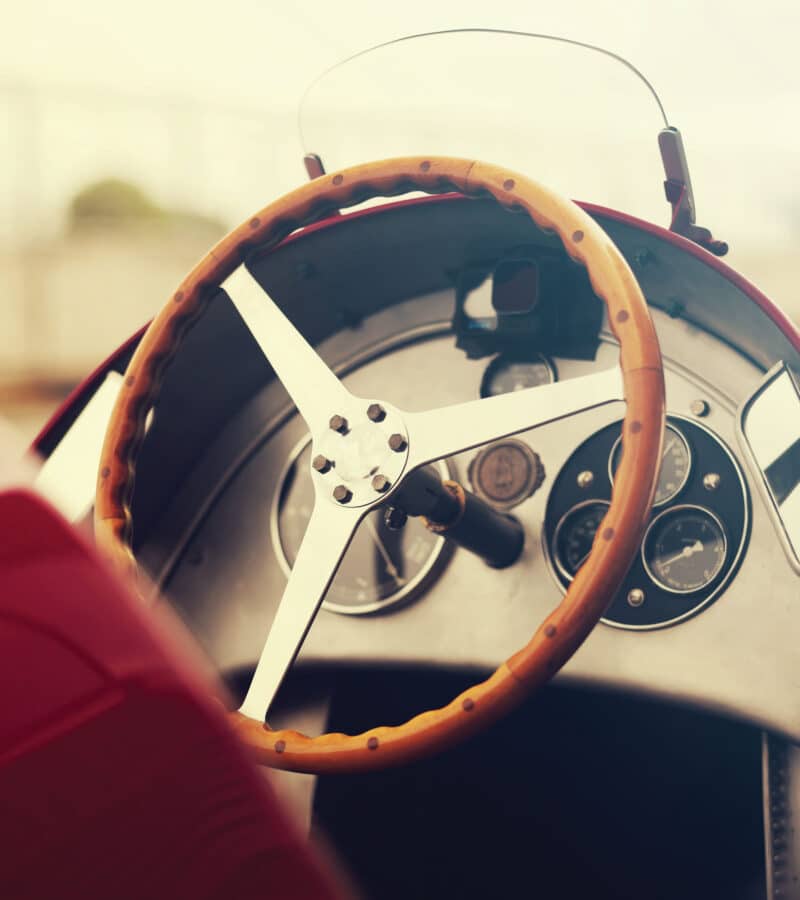
The ‘Alfetta’ was formidable in 1950, winning all F1 World Championship rounds (except the Indy 500)
Jakob ebrey
Both Brundle and Bearman reckon that these cars make them look at Silverstone differently, not just from a safety point of view, but in terms of how to drive it too.
“The corners are definitely a lot tighter,” Bearman points out. “Copse in our F1 car is flat out – it’s not today. It’s a big change.”
“The cars were a lot less robust than they are now. As you go back through the decades, survival was more and more of a thing,” says Brundle. “Even just cornering through Woodcote, I could feel my leg up against some bits and pieces, some sharp edges in the Alfa.
“You just know that if you were in the car when it had a massive shunt, you’d be chipped, basically. Ollie said the same thing. You work out where you definitely don’t want to have a crash!”
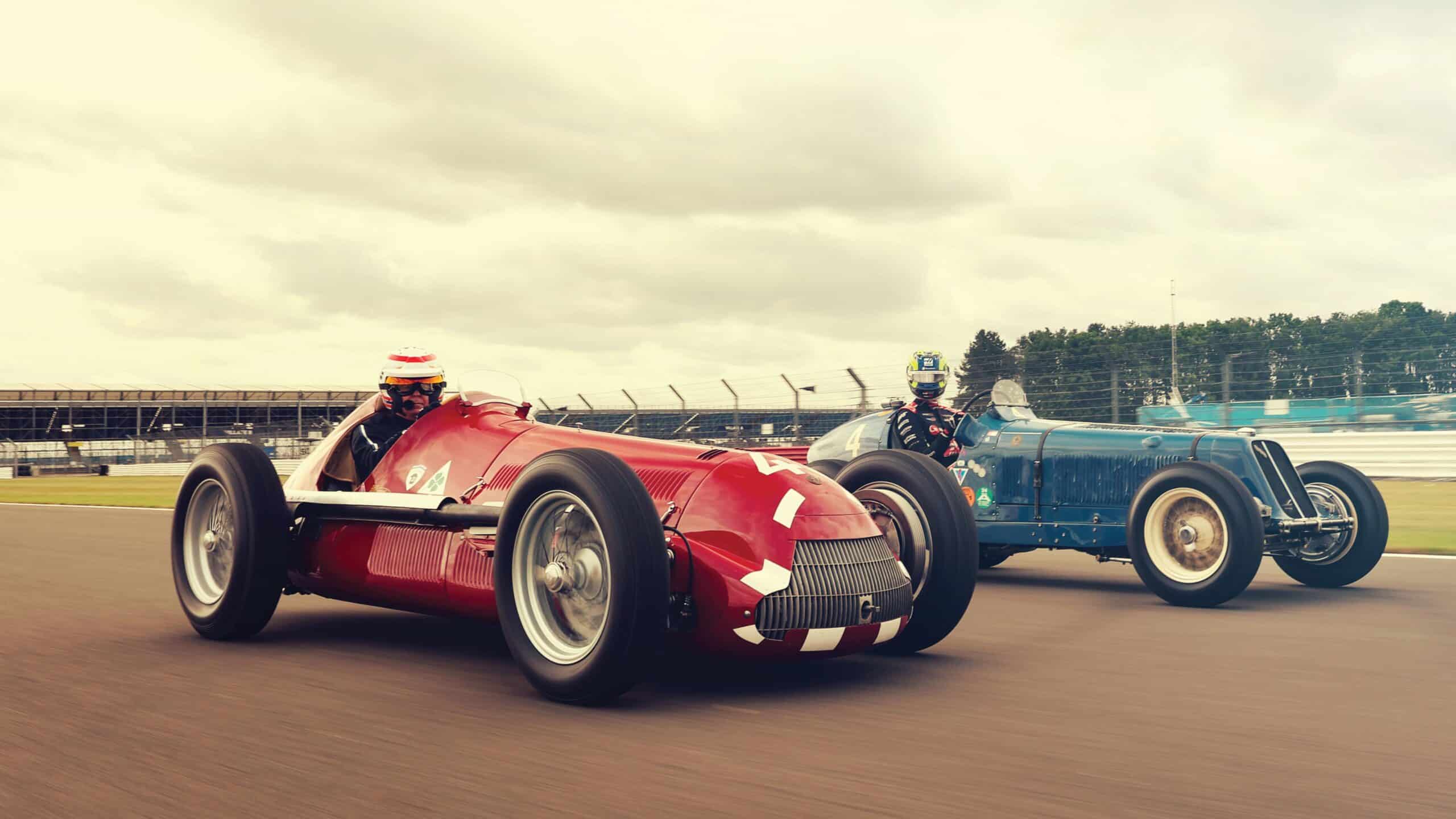
The day’s filming is all part of what is not just a highly significant year for F1, but also Silverstone. And this is where it all started – grand prix ground zero. Both men emphasise how the history isn’t lost on them, but also how their own lives have revolved around the circuit.
“It’s fast and challenging, and importantly for F1, Silverstone has still got that history and heritage”
“I already have a decent amount of knowledge about the past of F1 because I’m a huge fan of the sport,” says Bearman. “It’s a very important grand prix in the championship’s story and I’m very excited to be heading here for my first ever home race. I did one of my first practice runs with Haas here last year and also announced my drive for this year at Silverstone [in 2024]. It was already a very special weekend, but this time it’s going to be even better – and I’m really excited.”
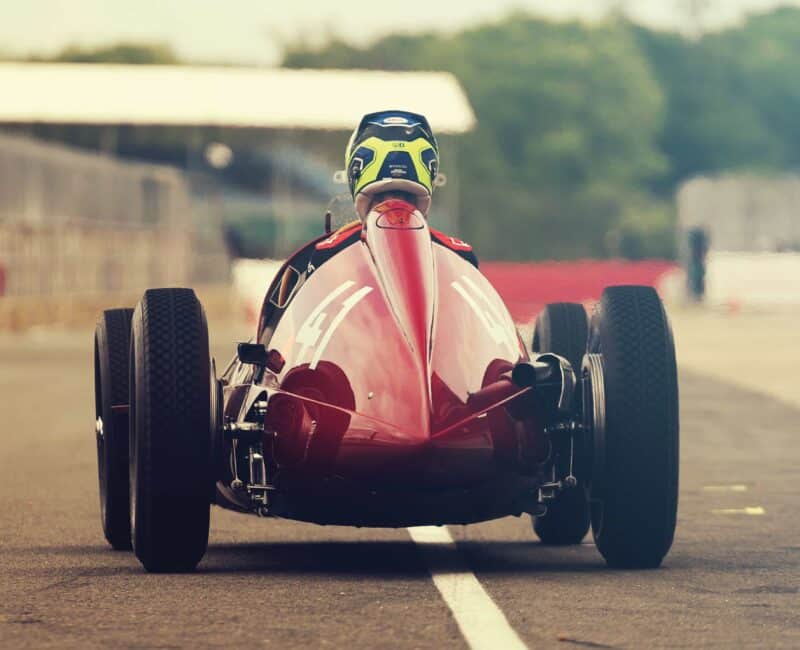
This is the view ERA cars would mostly have had of the 158 in 1950 – although this racer isn’t ‘real’; it was made from 70% original parts
Jakob ebrey
“It’s important to me because I stood at Copse Corner in 1965 when I first came here,” adds Brundle. “And then I did lots of racing here in touring cars, junior formulae and F1. The work I did here with the BRDC [as chairman] and the circuit over the years means a huge amount. The drivers love it because it’s fast and challenging. But much more importantly, for F1, it’s still got that history and heritage. They’ve upgraded the show here. Silverstone has caught up with some of the world’s circuits in that it puts a festival on for four days, of music and racing and lots more besides. The drivers are smiling, the fans are smiling – everyone goes home happy.”
Judging by the recent crowd-pulling successes of the British Grand Prix, Silverstone Festival and so much more at the track, it’s sure to keep happening for years to come.
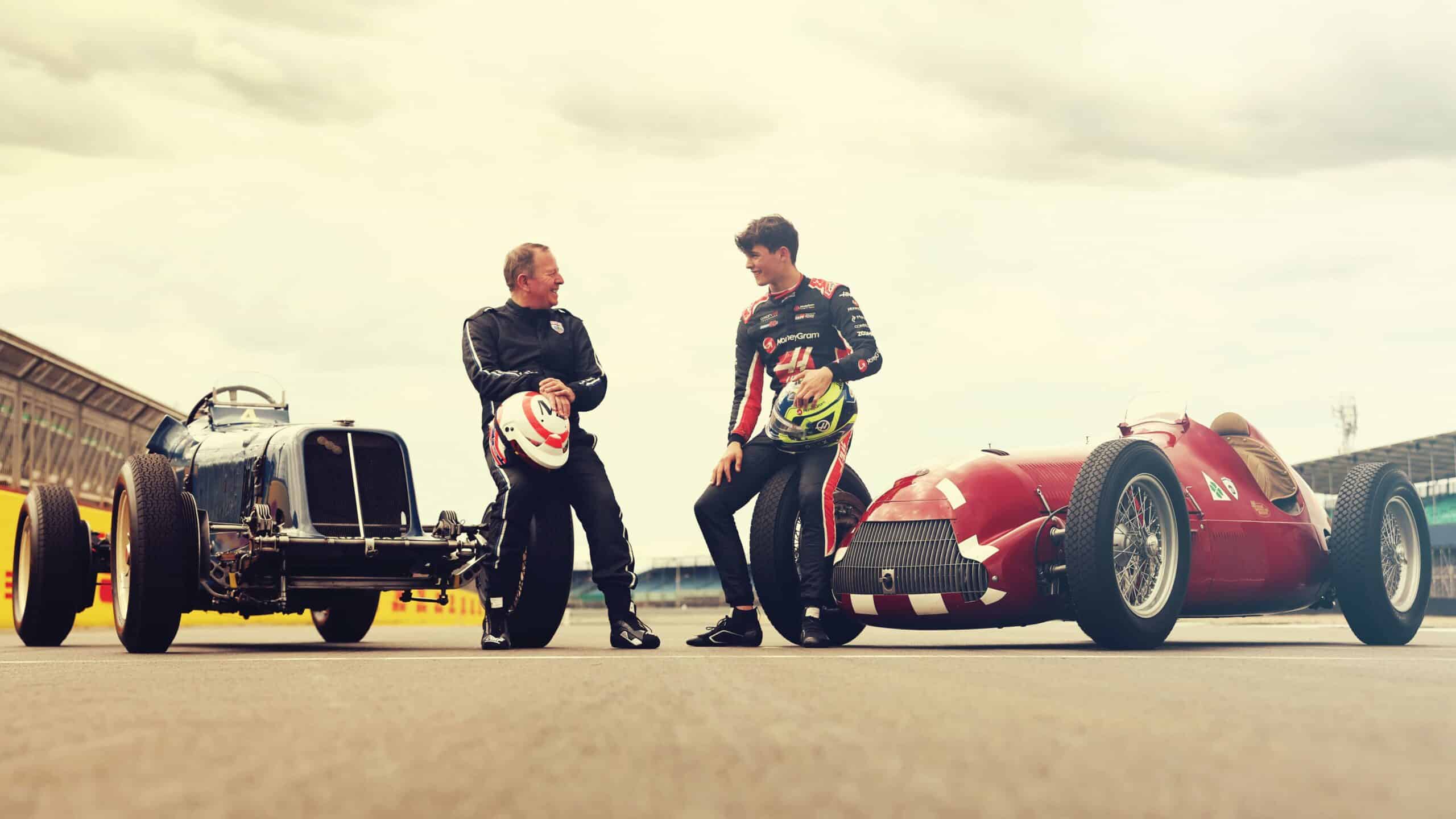
1934 ERA R4AEngine 2-litre supercharged inline six cylinders chassis Ladder frame Power 260bhp Transmission Wilson preselector four-speed manual Suspension (front & rear) Semi-elliptic leaf and Hartford friction shock absorbers Weight 750 kg |
Alfa Romeo 158Engine 1.5-litre supercharged straight-eight chassis Tubular frame Power 350bhp Transmission Five-speed manual Suspension (front) Double longitudinal links, transverse leaf springs, hydraulic shock absorbers Suspension (rear) Transverse leaf spring, hydraulic dampers Weight 700kg |
This year the Silverstone Festival (August 22-24) will celebrate 75 years of Formula 1 with its own special tribute. The biggest and best collection of cars raced by grand prix champions since the competition began will be on display, with at least one car for every title winner. For ticket information visit silverstone.co.uk.